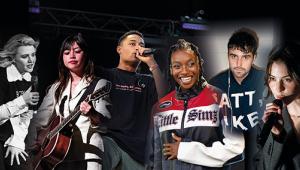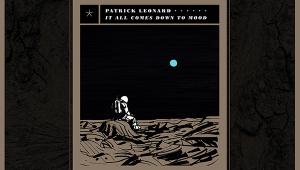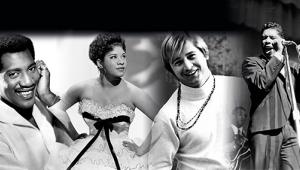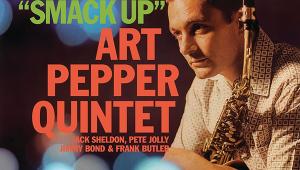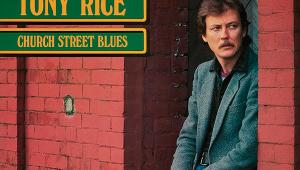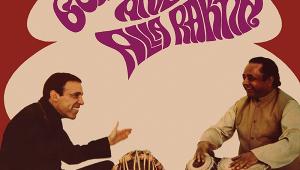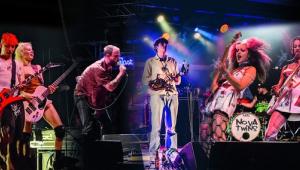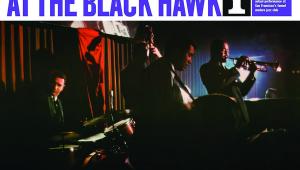Game changers
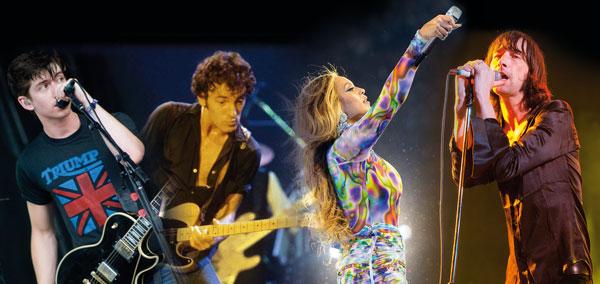
If it ain't broke, so the maxim goes, don't fix it. But no artist worth their garlands ever paid much heed to that way of thinking - with a few honourable exceptions such as The Ramones. Nonetheless, most musicians prefer evolution to revolution, letting their approach to their work develop naturally as the muse dictates, sudden changes in style only running the risk of alienating fans.
The history of popular music is still dotted with examples of bold, if not always entirely successful about-turns in style, image and philosophy. The ratio of risk to reward can give record labels a serious case of the jitters, but when it's pulled off it only enhances an artist's reputation, even if it can sometimes take several decades for audiences and critics to fully appreciate their radical departure.
Curveball Cuts
Here we've gathered 20 examples that span almost six decades, from curveball releases that have arrived in 2024 way back to divisive long players which were originally released in the mid-1960s. Some attracted instant acclaim, but most, it's fair to say, were met with reactions ranging from bewilderment to downright outrage.
Polarising Picks
We're not expecting you to agree with the sympathetic ear we've lent to these albums - one listener's admirable experiment is another's disastrous blind alley. So if you want to suggest your own favourite examples that we may have missed, send your missives to the usual address.

Shabaka
Perceive Its Beauty,Acknowledge Its Grace
(Impulse!, 2024)
Here's a very recent example of the sudden stylistic lane-switch [see also p101]. Because for this British jazz saxophone virtuoso to create his first solo album almost entirely around his flute playing seemed roughly akin to Jimi Hendrix leaving the Experience to present his guitar-hungry fanbase with a set of piano ballads. But if this was a marked departure from Hutchings' celebrated work with Sons Of Kemet, The Comet Is Coming, Floating Points, et al, his talent for flowing melodies was flawlessly transferred onto the new instrument, with a pronounced new age feel permeating the proceedings.

Andre 3000
New Blue Sun
(Epic, 2023)
Seventeen years is surely enough time to make a sudden change in direction, and that's how long it took for the former Outkast star to come up with an album of new material after the Atlanta hip-hop duo bowed out with Idlewild, released in 2006. But this debut solo album threw a curveball to fans as it's anything but a rap record, instead offering ruminative ambient soundscapes in an 87-minute devotional full of freewheeling jazz, with a focus on spiritual discovery. Perhaps not coincidentally, it features like-minded handbrake-turner Shabaka Hutchings [see left] - on flute, naturally.
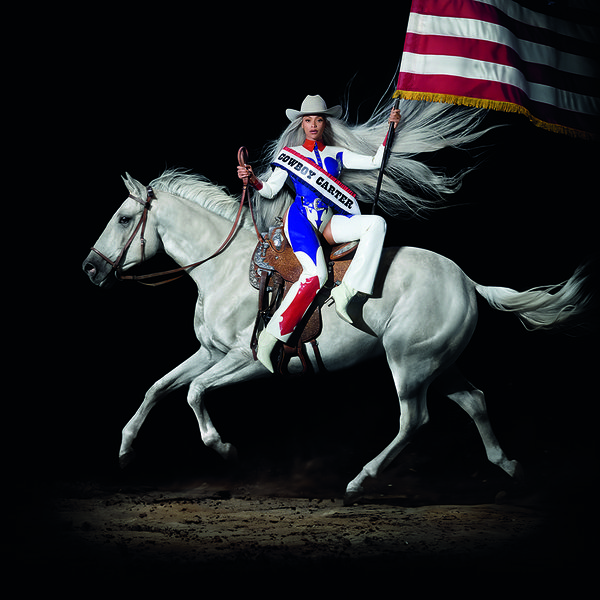
Beyoncé
Cowboy Carter
(Columbia, 2024)
She'd shown her versatility often enough, but did anyone outside Mrs Jay-Z's inner circle expect her to make a country album? Very few, we'd wager. Yes Beyoncé grew up in Texas, hearing country music all around her and often going to rodeos, but when she'd dabbled in country and bluegrass styles in the past she'd been greeted with disapproval from some Nashville purists. So she had a point to prove, and prove it she did on rhinestone-studded tunes including 'Dolly P' alongside Ms Parton herself, as well as songs channeling styles from psychedelia to folk to 'trap' and even opera. Awesomely ambitious stuff.

Dexys Midnight Runners
Don't Stand Me Down
<(Mercury, 1985)
If ever a sleeve said, 'Hope you like our new direction', it was the one used for Dexys' third album. Last seen resembling a travelling gypsy folk troup, they now looked like an interview panel for a job at a life insurance claims adjusters, while the celtic soul of 'Come On Eileen' was replaced by odysseys such as the 12-minute pop opera 'This Is What She's Like'. On repeated listens, though, it still glints with Kevin Rowland's maverick genius.

Marvin Gaye
What'S Going On
(Tamla, 1971)
At the turn of the '70s, it was clear this soul star was in search of a fresh challenge when he said he wanted to play pro American football. Thankfully he returned to music, and began work on songs penned from the point of view of a Vietnam veteran returning to problems closer to home. These resulted in one of the greatest albums of all time, a soul record full of despair at racism, social injustice, and a dying planet - long before green issues became a cause célèbre.

Garth Brooks
In The Life Of Chris Gaines
(Capitol, 1999)
The country icon had it all planned out when he and his co-writers created a whole album of songs in the persona of an Australian rock star, to fit a movie about the fictitious artist. The film never saw the light of day, though, and the album confounded huge swathes of his adoring public with its alt-rock-leaning style. If they'd looked beyond the wig and the soul patch facial hair, however, they'd have found one of his most accessible and radio-friendly records to date.

Radiohead
Kid A
(Parlophone, 2000)
Having made two of the greatest guitar records of the 1990s, Thom Yorke and co dispensed with verse-chorus song structures and the reassuring crunch of amplified electric axes for techno and drum 'n' bass-informed meditations. This fourth LP was as arrestingly bleak as their previous output, but some saw it as a cop out, relieving the pressure to follow up two classics in the same vein. As our ears and minds tuned in, though, the cynicism fell away.

Paul Mccartney
Mccartney Ii
(Parlophone, 1980)
While success with Wings had helped maintain his profile in the '70s, Paul was sometimes seen as the less experimentally inclined of The Beatles' Lennon-McCartney creative axis. This second solo record's departure into electronica and new wave-influenced off-kilter pop showed otherwise. Although greeted by sniffy reviews, it now sounds like an admirable departure, verging on both krautrock and ambient textures and with chartworthy confections like 'Coming Up'.
Breakaway Albums

The Beach Boys
Pet Sounds
(Capitol, 1966)
In November 1965, The Beach Boys released Beach Boys Party!, full of crowd-pleasing covers. So far, so early '60s. But anyone who'd heard its predecessor, Beach Boys Today! with its symphonic touches and suite-like ambitions, might have guessed it was a stopgap to allow Brian Wilson to create something really special. So it proved with Pet Sounds, filled with evocative songscapes we'd now label 'chamber pop', and opening up glowing new horizons for popular song.

Corinne Bailey Rae
Black Rainbows
(Thirty Tigers, 2023)
In the seven years since her previous album, the one-time soul-pop chanteuse had spent long periods in Chicago, immersing herself in African-American art history, and reconnecting with her own formative influences, from jazz to electronica, R&B and even Riot Grrrl-informed indie-punk. All of which were poured into this startlingly eclectic but compelling set that blends righteous anger with heart-rending empathy - as well as no shortage of arresting tunes.

Arctic Monkeys
Tranquility Base Hotel & Casino
(Domino, 2018)
By the time of the Sheffield tykes' sixth album, principal songwriter Alex Turner had been US-based for a while, and this record seemed worlds away from South Yorkshire and indie-rock. Written mostly on a grand piano in Turner's new home in LA, it then utilised all manner of vintage keyboards while picking and mixing genres from psychedelia and lounge pop to soundtrack funk and French chanson. The tunes weren't as immediate, but they cut through as surely as ever.

Bob Dylan
Bringing It All Back Home
(Columbia, 1965)
The erstwhile poster boy for American folk was about to horrify purists with his fifth album, its first half played with a full, amplified band on (gasp!) electric instruments. More than a year later, he would be greeted by UK crowds with boos and cries of 'Judas!' for his crimes. The whole process had begun here, however, with a peerless collection of contemporary folk-rock songs that would be celebrated long after the luddites had faded into irrelevance.

Beastie Boys
Paul's Boutique
(Capitol, 1989)
Having scared Volkswagen drivers everywhere when they rose to car-badge-toting prominence in 1986, the Brooklyn hip-hop trio's rap-rock sound had undergone a startling evolution by the time they returned nearly three years later. Turning their back on the boorish frat-boy antics and taking a funky, constantly ear-pricking sampladelic patchwork by production team The Dust Brothers as a template, Ad-Rock, Mike D and MCA bantered and blathered with fresh chutzpah. Paul's Boutique takes the listener on a wacky race through the musical junkshop of their collective imagination, in a potent creative reinvention.

Iggy Pop
The Idiot
(Rca, 1977)
Few fans of The Stooges' unashamedly scuzzy proto-punk sound would have predicted the band leader's next move two years after the Michigan renegades eventually split up in a strung-out mess. Now a fellow Berlin-based traveller of David Bowie, Iggy pursued a sound he described as 'a cross between James Brown and Kraftwerk', with significant input from Bowie, hence the similarities between this record and Low, released a few weeks earlier.
Breakaway Albums

U2
Achtung Baby
(Island, 1991)
Although they bestrode the '80s like brooding colossi, by the dawn of the 1990s familiarity with U2's rather earnest oeuvre had bred contempt in some quarters. But they weren't so complacent that they couldn't read the prevailing mood, so their seventh studio album displayed a hitherto concealed wit, weaving alt-rock, electronic and industrial textures into a sound further enhanced live with post-modern backdrops of a world being disrupted by the demise of the Eastern Bloc and the thawing of the Cold War. Yet they still managed to include timelessly uplifting ballads such as 'One'. Cowboy hats off, chaps.

Primal Scream
Screamadelica
(Creation, 1991)
After emerging from the C86 scene as jangly indie-pop aesthetes, then strapping on leather trousers to go full garage-rock, there were suspicions of Emperor's new clothes when Primal Scream, inspired by clubland and the Paul Oakenfold remix of an album track that turned into 'Loaded', downed the rave scene's Kool-Aid to produce an album blending house, techno and gospel-infused rock 'n' soul. But it was a landmark release.

Johnny Cash
American Recordings
(Def Jam, 1994)
Despite retaining his cool cachet, this legend of country noir had long since been creatively drifting, and as a result of finding himself without a record contract in the early '90s, his only release had been A Country Christmas. Rather anodyne stuff for the erstwhile Man In Black. So it was a thrill to hear him encouraged by new label boss Rick Rubin to leave the chick-a-boom behind for once and do a solo, acoustic-oriented record of grittier, more contemporary material.

Bruce Springsteen
Nebraska
(Columbia, 1982)
After 1980's The River boosted Springsteen's profile as the rising star of heartland rock, his label Columbia surely hoped he would follow it up with a commercial blockbuster. The Boss had other ideas, and retreated into introspection as he gave the E Street Band the day off and made a stripped-down set of four-track demos delving into the wounded, disillusioned soul of a nation struggling with recession, feeling a nagging emptiness beneath the American dream.

De La Soul
De La Soul Is Dead
(Tommy Boy, 1991)
The way in which these 'D.A.I.S.Y. age'-embracing hip-hop mavericks rejected their recent past verged on the brutal. The artwork and title spelt it out - we are not those lovable flower-wielding funsters anymore. Tracks such as 'Millie Pulled A Pistol On Santa Claus' and 'Ring Ring Ring' (dissing stalkerish wannabes) reflected a sourer mood and the playful samples were mostly gone (partly due to legal travails). But rap aficionados still regard it as a classic of the genre.

Neil Young
Trans
(Geffen, 1983)
For many rock fans of a certain age, this is the Daddy of all stylistic swerves, and one few appreciated on its release. But once again, time has afforded Old Neil a reappraisal or two, meaning this vocoder-heavy, electronically focused affair is now seen by some as being a worthy experiment, and one that begins to connect with the listener when understood as his attempts to find new ways of communicating with his young son, born with cerebral palsy and unable to speak.




